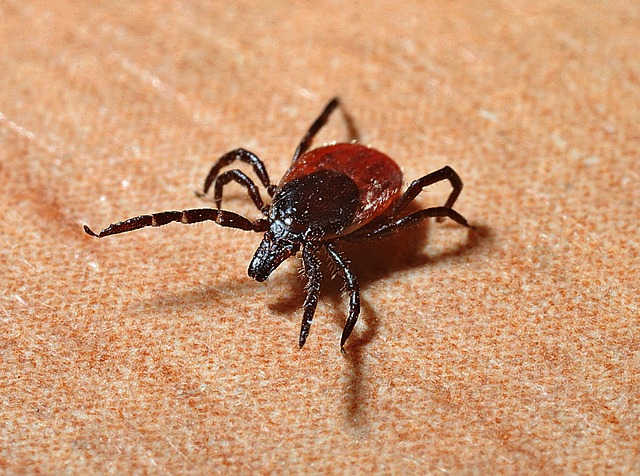Bartonella and Cat-Scratch Disease: a Potential Relationship with Mental Health

Bartonella is a genus of bacteria that has only recently been identified as a cause of human disease. The bacteria was identified due to the human immunodeficiency virus (HIV) epidemic. HIV attacks the immune system, leaving HIV patients more susceptible to infections. In HIV patients, bartonella was first identified due to tumor-like skin and organ growths that can occur in patients infected with the bacterium (Akram 2023). One study found that in cases of HIV-infected patients with fever, 18% of them tested positive for bartonella (Koehler 2003).
Cat-Scratch Disease
While cat-scratch disease has been recognized as a medical condition for many decades, the bacteria that causes the infection was not isolated from patients until 1992 when it was identified as bartonella (Margileth 2000). Cats commonly carry bartonella and can transmit the bacteria to humans through a bite or scratch. The infection is more prominent in young cats, making them a common cause of human infections.
Beyond cats, evidence suggested that several different types of biting insect can carry bartonella and may also cause infection. Fleas, ticks and biting flies are common suspects, as they have been shown to spread bartonella infections among animals (Mosbacher 2011).
The Symptoms of Bartonella Infections
Symptoms of cat-scratch disease usually include a reddened bump on the skin at the site of infection (Zangwill 2021). Lymph nodes generally become swollen in approximately one to two weeks. Fever, fatigue, joint pain and headache commonly occur. In some cases, the lymph node can rupture through the skin releasing pus. In the majority of cases, the acute symptoms resolve over time.
However, 10-15% of patients do not present with traditional symptoms. Eye disease, seizures, neuropathy, inflammation of the liver or spleen, abdominal pain, joint pain, skin rash, bone infections, lung disease and conditions involving other organ systems have been described (Zangwill 2021). Skin lesions, called “bacillary angiomatosis” can affect up to almost 50% of patients and present in numerous forms, from rashes, skin growths, to striae that look like stretch marks.
Mental Health Symptoms Associated with Bartonella
Bartonella infections are known to potentially affect the central nervous system. One small study found that approximately 10% of patients with cat-scratch disease had symptoms associated with infection in the brain. Symptoms included meningitis (swelling of the protective membranes around the brain and spinal cord), neuroretinitis (inflammation at the end of the optic nerve and retina at the back of the eye) and optic neuritis (inflammation of the optic nerve) (Canneti 2019). In the study, patients who had neurological involvement had worse outcomes, with only 50% of patients recovering over time.
Depression and Bartonella
Due to the potential involvement in the central nervous system, cases of bartonella-induced mental illness have been suggested or reported. Three cases of patients with agitation, panic attacks and/or severe depression with laboratory testing and history suggestive of bartonella infection improved significantly after antibiotic treatment (Schaller 2007). Mental health symptoms typically came on rapidly and were out of character for the infected individuals.

A study in 2018 explored the connection between bartonella antibodies, toxoplasmosis antibodies (a parasite infection commonly spread by cats to humans) and depression (Flegr 2018). Antibodies are a marker for an immune response to an infectious agent. When present they typically indicate past or present exposure, although the correlation is not always perfect, varying based on a person’s immune function. While somewhat complex, the study showed a correlation between depressive symptoms and bartonella antibodies that varied in both men and women based on concomitant exposure to toxoplasmosis.
Bipolar Disorder and Bartonella
Bipolar disorder is a mental health condition that has periods of depression interspersed with periods of mania. When an individual is manic, they have an overabundance of energy and often engage in risky or self-destructive behaviors due to a sense of feeling invulnerable.
A small study in bipolar youth explored the incidence of infection due to different bacteria that might contribute to the condition (Greenberg 2017). The study was in the Northeast in an area endemic with tick-borne disease. Of the children, 92% were found to have been exposed to tick-borne pathogens, with 30% showing evidence for past or present bartonella infection.
Schizophrenia and Bartonella
Schizophrenia is a condition where individuals often lose touch with reality and have trouble maintaining normal social relationships. In a small study of patients with schizophrenia, 65% showed evidence for bartonella infection as compared to 8% of healthy patients (Lashnits 2021). A case report of a 14-year-old boy who became psychotic after infection with bartonella has also been documented. In the case, after the child was finally treated with antibiotics, the symptoms regressed and the boy returned to health (Breitschwerdt 2019).
Conclusion
While the evidence is very preliminary, the possibility that bartonella is a contributing factor to mental health conditions should not be overlooked. Bartonella exposure is common in cat owners and possibly from a number of different species of biting insect. Considering the epidemic of mental illness in the United States and around the world, a further exploration of potential causes, like bartonella, may help to open up a better understanding of factors that can contribute to mental health. For individuals with evidence for infection, bartonella treatment may also improve concurrent mental health symptoms.



